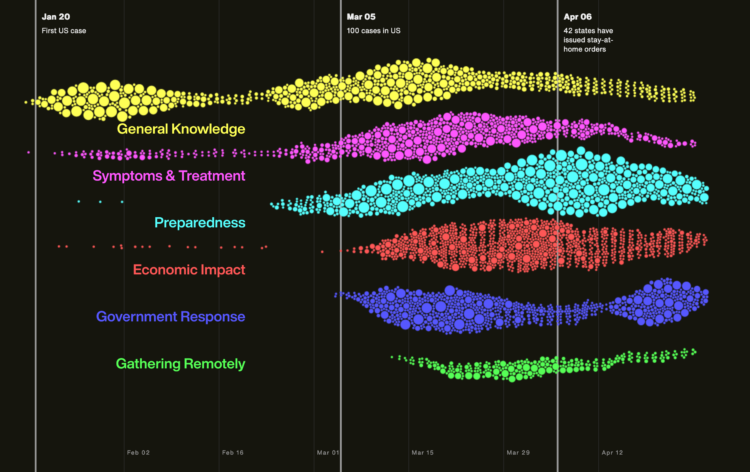Many brands that were at-risk before the pandemic or ran with low profit margins might not make it through this thing. The Washington Post used a faux mall map to show the levels of risk:
Companies in this faux mall are rated as speculative investments at Moody’s and S&P as of April 13. These stores are already in financial trouble, and may not be able to access government stimulus money. The stores with the worst ratings are closer to the top of the mall. Brands that are part of the same company, like the Gap and Old Navy, are included in the same storefront.
The above is one level out of four, and each rectangle is sized by a company’s revenue.
I’m getting childhood flashbacks passing time inside the circles of clothes.














 BTS, the South Korean boy band, is apparently really good at dancing. Ketchup Duck
BTS, the South Korean boy band, is apparently really good at dancing. Ketchup Duck 

 Visualize This: The FlowingData Guide to Design, Visualization, and Statistics (2nd Edition)
Visualize This: The FlowingData Guide to Design, Visualization, and Statistics (2nd Edition)










